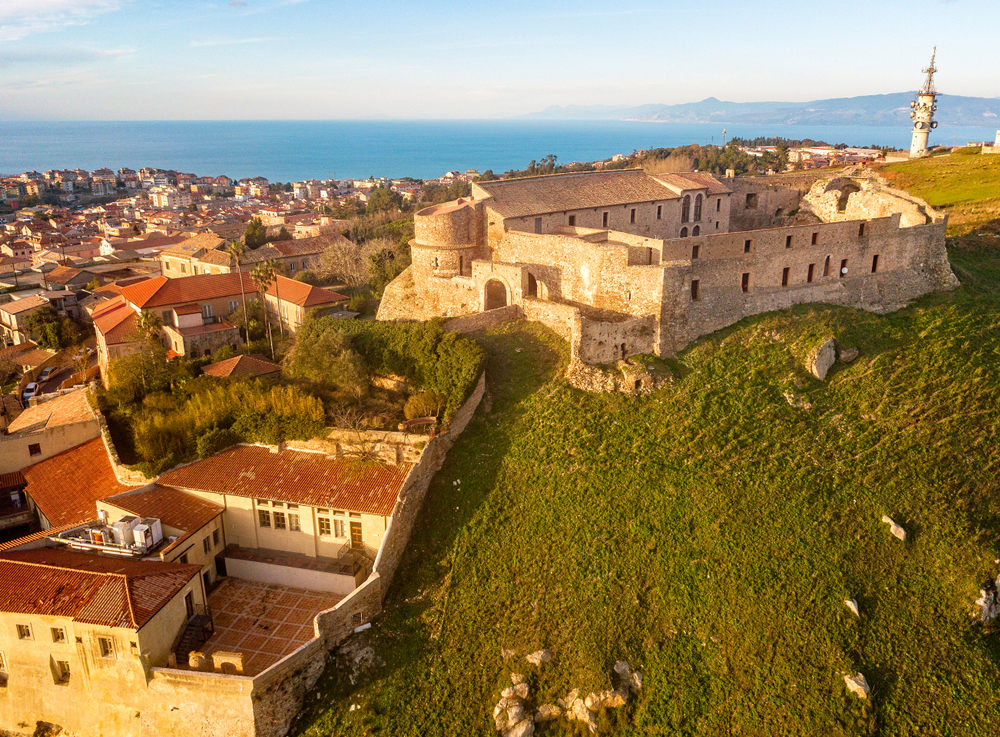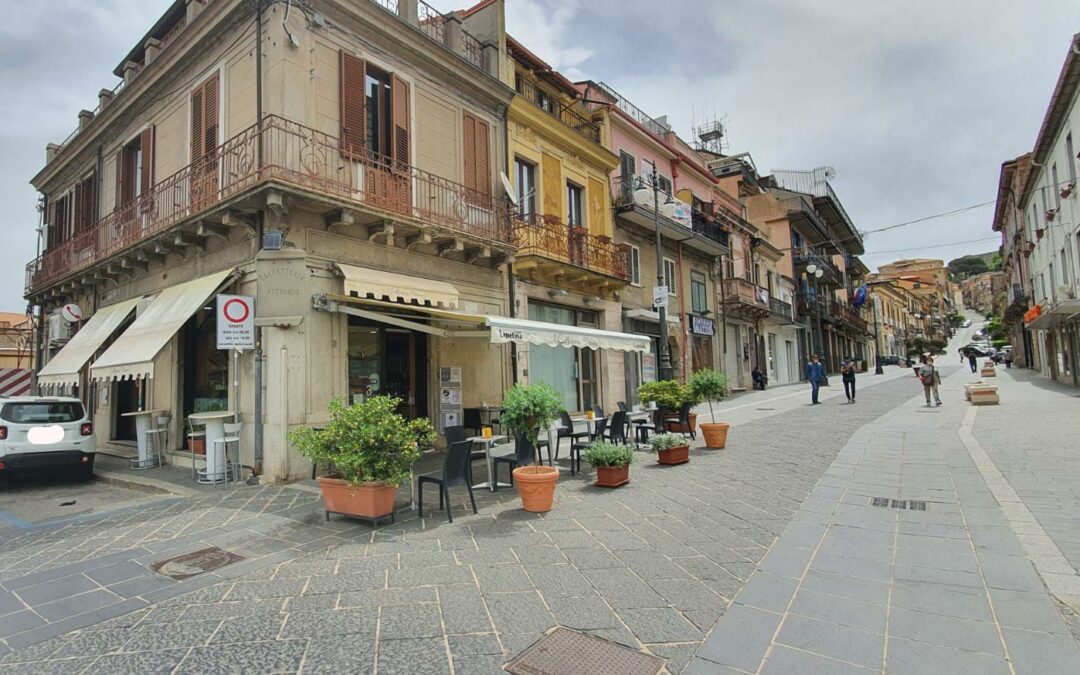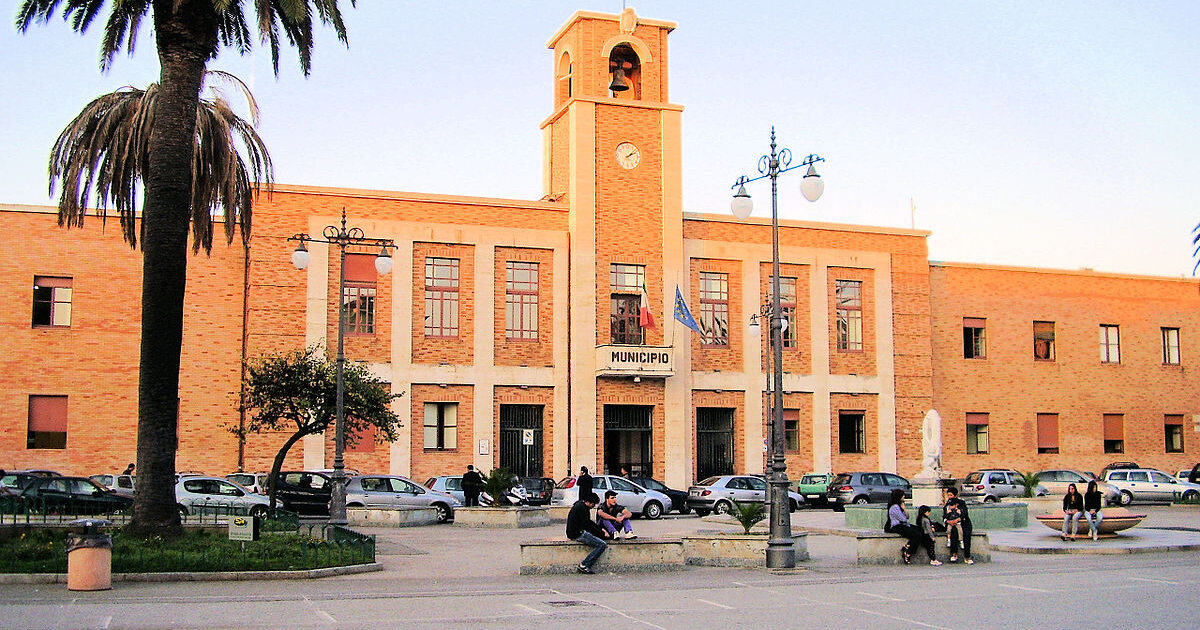Vibo Valentia

Vibo Valentia after the end of the Roman Empire the Byzantines fortified it, but the Saracens attacked and plundered it several times. Roger I of Sicily placed in the eleventh century. his camps in Vibo and later transferred the seat of the diocese, present in Vibo since the fifth or fourth century, to his Miletus.

Also in this period, Ruggero dismantled columns and marbles of the ancient classical buildings of Vibo Valentia to use them in Mileto in the construction of other buildings. Frederick II of Swabia passing through the city, was impressed by the beauty and strategic potential of the place (Nicolai de Jamsilla, De rebus gestis Federici II imperatoris), commissioned the "secret" of Calabria, Matteo Marcofaba, to rebuild and repopulate it and since then it changed its name to Monteleone di Calabria.

In this period the first phase of the castle was built which by mistake was attributed to the Norman period. Under the Angevins the city acquired even more prestige and prosperity, becoming a series of the royal vicar. In the same period, the castle and the medieval walls were further strengthened and enlarged. Later between the Angevin and Aragonese periods, it became a Feud of the Caracciolo and then a state-owned municipality. In 1501, usurping what were the rights of the city, it was entrusted again as a fief to the Pignatelli. For this a revolt broke out for which General Lo Tufo of the kingdom of Naples had to intervene. The latter, unable to tame it, called to discuss the seven leaders of the people who were killed by treason. A few years later, Diana Recco from Monteleone, who had lost a brother and her father in the revolt, stabbed General Lo Tufo who was participating in the wedding ceremony of one of her daughters. In any case, the Pignatellis thought about the development of the city, creating spinning mills, oil mills and favoring many craft activities.

In the nineteenth century the French elevated it to the capital of Calabria Ultra and from then until a few decades ago many trades flourished, the memory of which is in the name of streets (Via Forgiari, via Chitarrari, via Argentaria, etc.) and institutions such as the Real Collegio Vibonese (the still existing Convitto Filangieri and the Municipal theater, demolished in the sixties). After the return of the Bourbons, the city lost its role as capital and its political and economic importance was downsized. During the wars for the unification of Italy, Garibaldi passed through Monteleone where he obtained material aid and funding from the inhabitants.

Under Fascism, thanks to Luigi Razza, journalist, politician, Member of Parliament and Minister of Public Works, a great revival was started in the field of public works, in which the construction of the Town Hall (completed in 1935 and which, according to the initial project, should have received, at the end, the Prefecture of the new province) in a rationalist style. On the initiative of the same Race, in 1927 a royal decree inspired by the fascist government which became effective on January 13, 1928, renamed the city from Monteleone di Calabria to, according to the Latin term, Vibo Valentia.

The public building push in the city came to a decisive halt when the minister Razza disappeared in a plane crash in Egypt in 1935. The city subsequently wanted to honor his memory with a full-length bronze statue sculpted by F. Longo in 1938 and personally inaugurated by Benito Mussolini in 1939 during his visit to the city, which stands in Piazza San Leoluca on a high pedestal, surmounted by a stele bearing the marble effigy of the winged Victory on top.
 ???????
???????
Another effigy was reserved for him in the Town Hall, named after him. The city also named its military airport, the stadium, a square and a street in the historic center after Luigi Razza.
Video: Vibo Valentia
Map: Vibo Valentia
Address: Piazza Martiri di Ungheria, 89900 Vibo Valentia
(VV) Calabria
Latitude: 38.6750939
Longitude: 16.0986663
Site: http://www.comune.vibovalentia...
vCard created by: BBCC
Currently owned by: BBCC
Type: City
Function: Public place
Creation date:
Last update: 19/05/2021